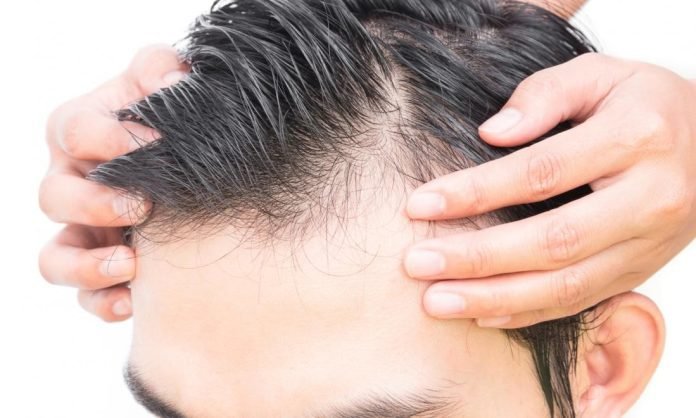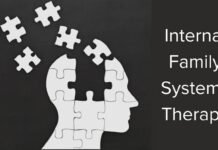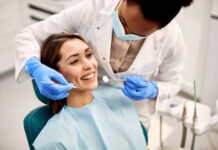Last Updated on March 12, 2024 by admin
Table of Contents
Is losing hair every day normal?
Definitely!
Even the strongest of hairs experience some fallouts. This is because the human cells dry out and regrow almost every second. When this cycle comes around, it results in dead skin cells, hence, the scalp tends to dry and get flaky. This, in turn, causes hair fall which is a normal everyday bodily process.
When your hair loss, however, becomes a handful every day, this may be beyond normal. In which case, you may need to find the right Hair Loss Treatment for men that can save you from baldness.
What could be causing my hair loss?
When you feel like your everyday hair loss is getting more troublesome and worrisome, it may be possibly because of any of the following:
Androgenetic Alopecia
This is a pattern of baldness common to both men and women as a result of hereditary balding. Although it is very common to experience hair loss at some point in your life, androgenetic alopecia happens even as early as puberty or when you reach at least 15 years old.
You will know that you have androgenetic alopecia if you tend to lose hair from the temples and crown of the head for men and if your hair becomes thinner all over the head for women.
Two of the best over-the-counter remedy for androgenetic alopecia are topical minoxidil and oral finasteride. These are FDA-approved medications for this type of hair loss. However, it may take 6 to 12 months for the results to become fully apparent and should be adhered to for at least one year.
Diet or Food Intake
If you tend to ingest foods or intake beverages that are excessively rich in sugar, sodium and other health deterrents, it is most likely that you will experience an increased amount of hair loss every day. When you are beginning to notice unusual hair fall, it may be the best time to regulate these kinds of foods.
Essentially, what you eat is reflected through the texture and appearance of your skin and hair. Thus, including foods and beverages rich in zinc, iron, and folic acid in your daily diet can help maintain healthy skin, scalp, hair health, and nails.
It can also be helpful to increase your protein and antioxidant-rich foods in your everyday meals. This can help decrease the risk of hair damage and breakage while promoting thicker and stronger hair strands.
Hormonal Changes
Hormonal fluctuations or imbalances are very common in women and adolescents. When a person goes through adolescence, one of the many changes he or she would experience is the development and changes in the body including the rapid hair fall and regrowth cycles.
Aside from hormonal changes during adolescence, women, also experience these imbalances during pregnancy and menopause. In which case, there can be an increased risk of excessive hair loss.
In most cases, hair loss caused by hormonal changes is the result of modifications in the follicle composition. Thus, treating it with the hormone dihydrotestosterone or DHT can help decrease the amount and instances of hair fall.
Thyroid Conditions
These include hyperthyroidism and hypothyroidism. In which case, patients experience excessive hair fall and thinning of the eyebrows, especially on its outer area. This can be very tricky as you cannot directly treat your hair loss condition. Rather it would be best to consult a thyroid specialist.
Patients will get a higher probability of getting their hair loss condition treated if the root cause which can either be hyperthyroidism or hypothyroidism is addressed first. Thus, visiting your physician can be the best recourse for this issue.
Stress
Do you have the habit of pulling your hair when you are stressed out?
Then, stop!
Aside from the pulling action that your scalp receives, the stress that you inhibit aggravates the weakening of follicles, hence, resulting in unwarranted hair loss. Indeed, stress can affect the normal human body process which most often than not results in many disorders.
The best way to safeguard your scalp and hair is to manage your stress. Find ways on how you can calm your nerve and relieve yourself from stress.
Chemotherapy
This is a more advanced case of hair loss as it is uncontrollable. Similar to thyroid conditions, it may be best to treat the source before delving into the issue of hair loss.
Undergoing chemotherapy can be very devastating and challenging but aiming for the best will help you cope. When that time comes, there is more than one way to retrieve the health of your scalp and hair.
Ringworm
This is a fungal infection that can occur on the skin as well as the scalp. When the scalp is infected, it is commonly termed tinea capitis.
Symptoms include tiny round rough-edged spots that increase in size, leading to scaly, bald patches on the scalp. You will also notice that your hair becomes brittle and they break easily. In some cases, there is itchiness, red ring-like patches, or oozing blisters on the scalp.
Ringworm can be treated with antifungal topical creams. You may also ask your dermatologist to prescribe an antibiotic to address the cause of the infection and to prevent it from reoccurring.
Are there clinical treatments that can hamper hair loss?
Availability of clinical treatments for hair loss and baldness is limited to hair transplant through surgery. However, in the advancing world of science and medicine, studies show that platelet-rich plasma or PRP therapy can do wonders in combating hair loss.
PRP Hair Loss Treatment involves a three-step procedure that uses the patient’s own blood.
Step 1: Drawing Blood
A good amount of blood is taken from the arm of the patient. Depending on the severity of the patient’s hair loss condition, about 30 to 60 millilitres of blood is drawn from the patient. This is done every session during the entire treatment plan.
Step 2: Blood Purification
This is the process where your blood is separated into three layers, the platelet-poor plasma, the platelet-rich plasma, and the red blood cells. The layering is processed in a centrifuge machine for about ten minutes.
Step 3: Administering the PRP
When the blood is purified the platelet-rich plasma is drawn into a syringe. After which your doctor will determine the injection points on your scalp and administer the PRP accordingly.
In most cases, it takes about one hour to complete the entire procedure. Depending on the severity of the hair loss condition, a patient may need 3 to 6 sessions to achieve full results.
PRP hair loss treatment is hailed as a safe cosmetic non-surgical approach to alleviating hair loss because it uses the patient’s own blood. Thus, reducing the risks of irritation or infection. However, just like any other cosmetic treatment, it may be best to consult your trusted cosmetic doctor to determine if this hair loss treatment in Melbourne is the most ideal for your condition.
Treating hair fall can be very precarious since underneath your scalp is a multitude of sensitive and delicate tiny veins and blood vessels that may cause severe complications with the wrong administration of injectables. Thus, it requires the steady, accurate and careful hands of a licensed and highly skilled provider to instil PRP therapy for hair loss conditions.
To prevent hair loss, the best way is to keep yourself healthy at all times. Eat the right kinds of food and eliminate unhealthy and undesirable lifestyle habits such as smoking and excessive alcohol drinking.
When your hair fall is thinning your hair down, visit SKIN CLUB Cosmetic Doctors for the best hair fall treatment in Melbourne!
Apart from this if you are interested to know more about Your Complete Guide to PRP Hair Restoration then visit our Health category.






















